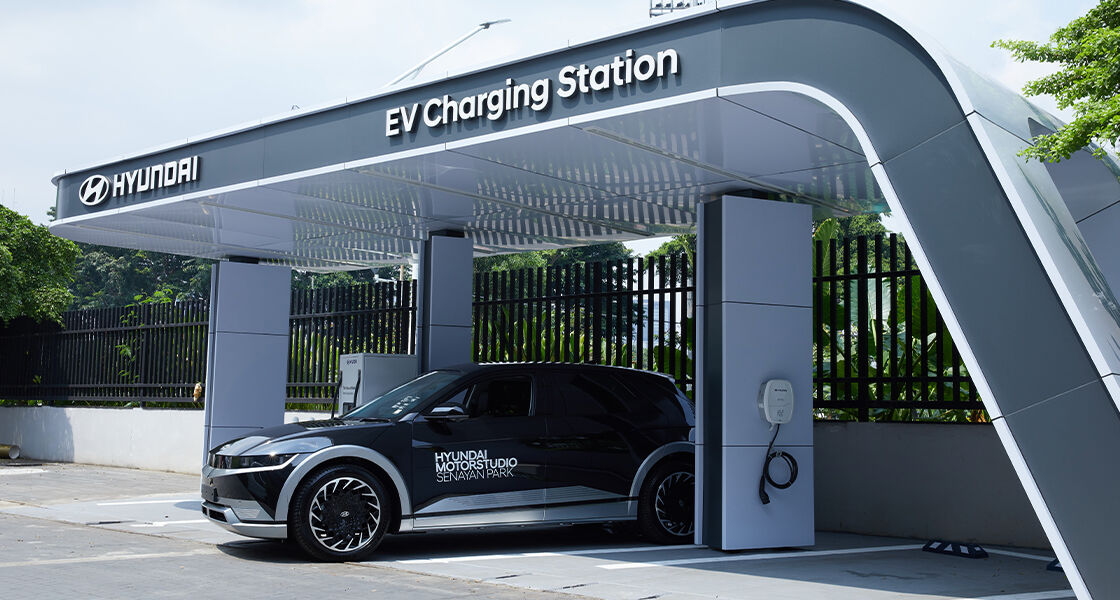Charging stations have become essential for the growing number of electric vehicle (EV) owners in Indonesia. With advancing eco-friendly technology, EV charging stations are a vital part of supporting daily mobility for Hyundai EV users. Easier access to charging stations and robust infrastructure make driving an electric vehicle increasingly enjoyable. Understanding how they work, their locations, and proper maintenance can be a small step with a big impact toward a greener future.
What Are Charging Stations and Their Types?
A charging station is a facility that supplies electric energy to recharge EV batteries. Like gas stations for conventional vehicles, charging stations serve as a "pit stop" for EVs to gain additional power. The difference is that the process is cleaner, quieter, and more environmentally friendly.
Here are the main types of charging stations:
- Level 1: Slow charging using standard 120V-230V AC power, delivering 1.4 kW to 3.7 kW. Typically used for home charging, it can take 8-12 hours for a full charge.
- Level 2: Charging with 240V AC power, delivering 7 kW to 22 kW, reducing charging time to 3-6 hours, depending on battery capacity.
- DC Fast Charging (Level 3): Fast charging using DC power, ranging from 50 kW to 350 kW. Fast chargers can charge a battery to 80% in 30-60 minutes, ideal for long trips.
Charging standards like CCS (Combined Charging System), CHAdeMO, and AC Type 2 ensure compatibility across EVs globally. Hyundai EVs typically use the CCS standard, now a global benchmark.
How EV Charging Stations Work
The charging process at EV stations is straightforward. When the charging cable is connected, the EV and charger communicate to determine the optimal current and voltage for efficient and safe charging.
Multi-layered safety systems protect the battery and vehicle from risks like overcurrent, overheating, or short circuits. Charging stations also feature status indicators and estimated completion times, providing convenience and confidence for users.
Locating and Accessing Nearby EV Charging Stations
For Hyundai EV owners, finding nearby charging stations is now easier. Digital map apps like Google Maps allow users to quickly locate the closest available stations. Some apps even provide real-time updates on charger availability.
Hyundai is actively expanding its Hyundai EV Charging Stations network across major cities and strategic routes in Indonesia. Through partnerships with public charging providers, Hyundai ensures easy access for all Hyundai EV users.
When choosing a charging station, consider supporting facilities. Locations with comfortable parking, cafes, or rest areas can make charging time more pleasant and practical.
EV Battery Lifespan and Maintenance
EV battery lifespan typically ranges from 8 to 10 years, depending on usage and maintenance. Factors like extreme temperatures, overcharging, and aggressive driving can affect battery durability.
Hyundai offers an 8-year or 160,000 km battery warranty (whichever comes first), providing extra peace of mind.
Battery maintenance is simple: avoid routine 100% charging, don’t let the battery stay empty for long, use trusted EV charging stations, and leverage smart battery management features to maintain optimal temperature and performance.
The Future of Charging Station Infrastructure in Indonesia
Indonesia is entering a new phase in charging station infrastructure development. The government supports EV adoption and charging networks through Presidential Regulations and incentives.
Hyundai is a pioneer in building an integrated EV ecosystem in Indonesia. Beyond producing high-quality EVs, Hyundai continues to expand its EV Charging Station network to enhance user accessibility.
Charging technology is evolving, from ultra-fast chargers that can charge batteries in minutes to wireless charging systems, which are still in testing and not yet widely available.
As access to nearby EV charging stations grows, more people will transition to electric vehicles. Now is the time to join the shift toward a cleaner, more practical, and eco-friendly future.
With this guide, you’re ready to hit the road with your Hyundai electric vehicle and enjoy the convenience of top-tier charging stations. The future of green mobility starts with one small step: choosing the right charging station.
